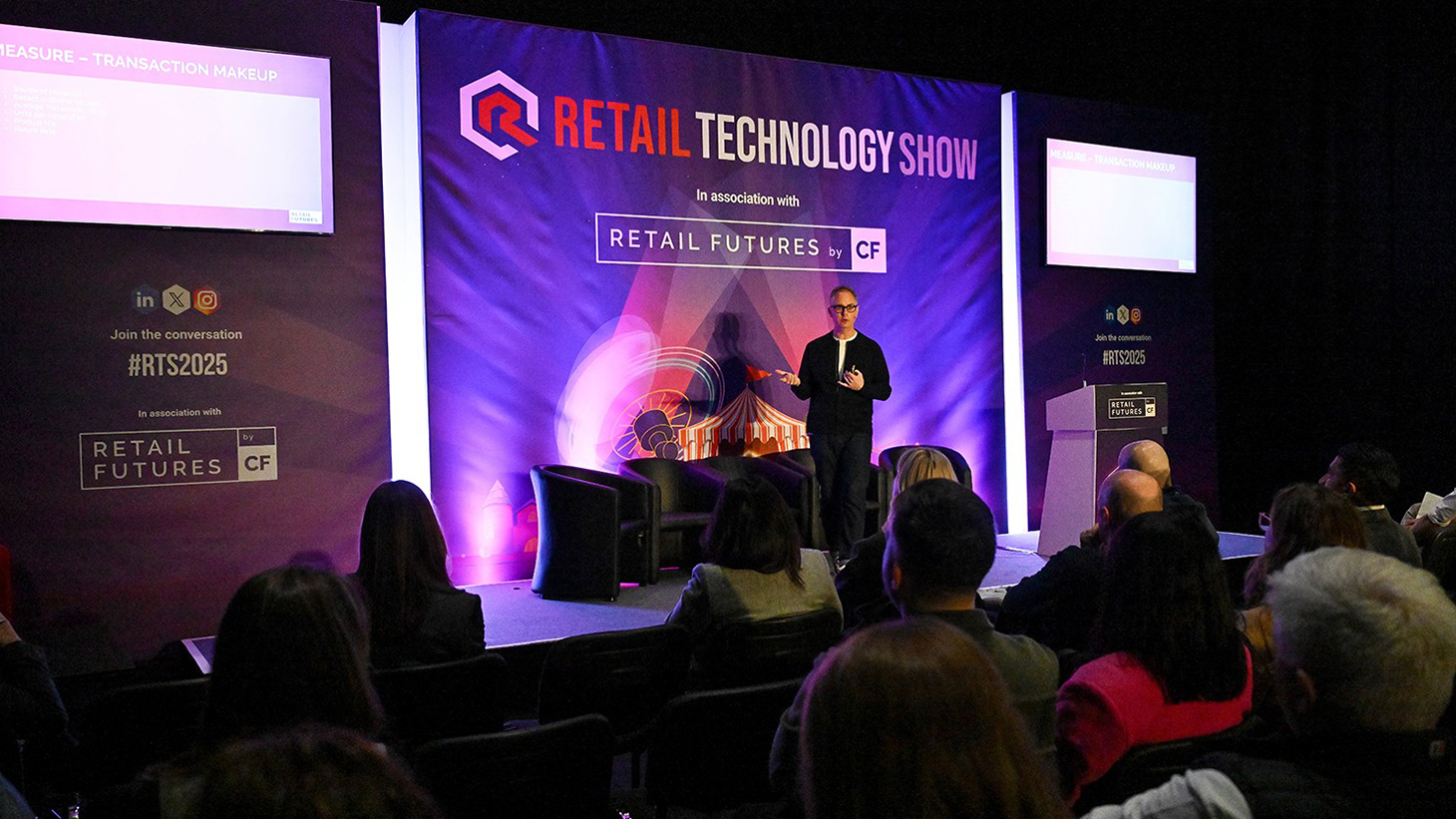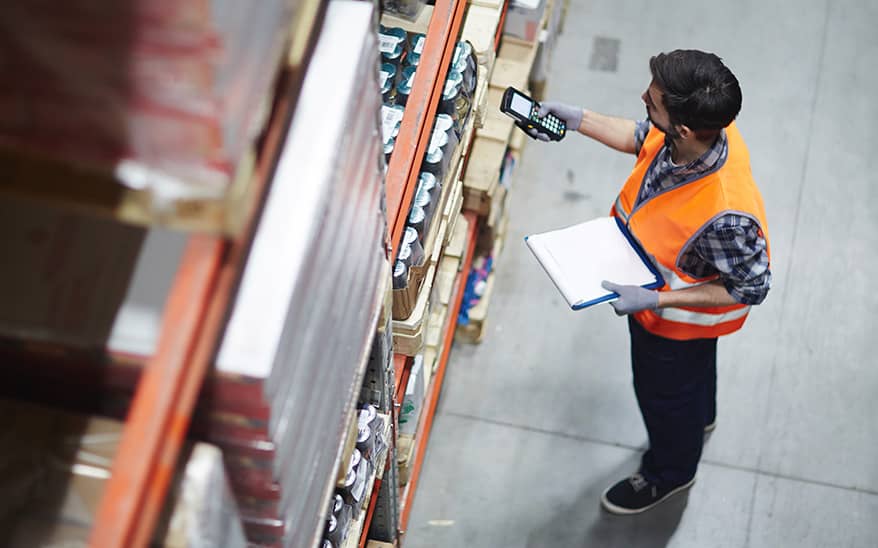What we learned about retail supply chain at Retail Technology Show 2025
- 16 April 2025
- Ben Sillitoe

New ways of monitoring inventory, building transparency, and the importance of continuing to tackle the “curse” that is product returns – Retail Technology Show (RTS) 2025 at London’s ExCeL highlighted essential targets for modern retail supply chains.
I was part of the conference bill for the first time, hosting the Wondrous Stage on the morning of day two – and those I welcomed onto stage, interviewed, or moderated in a panel debate all had something to say about supply chain.
Nobody’s Child founder Andrew Xeni spoke of the importance of “getting your house in order” in terms of building a comprehensive understanding of exactly where product materials come from and the conditions in which they were manufactured. It’s all about building the right culture in a business and if the executive team lead by example and work hard to keep this clear and transparent, it helps to foster the appropriate environment for a business to thrive, he noted.
Transparency as a responsible business practice was also raised by Jag Weatherley, Asos managing director of Europe and the rest of world, who revealed the online fashion house has selected new supply chain mapping tech to support such endeavours.
Elsewhere in my stream, New Look’s senior head of sustainability, sourcing & quality Sue Fairley noted one of the most crucial things for retailers “is to bring the big data together” and make sure it’s understood and “validated” in some way.
Considering the changing regulatory and reporting landscape, Fairley hinted at the need for even tighter knowledge of supply chain data and information sharing between partners across the value chain.
“I’m a supplier to Asos and Zalando and I have to pass data to them,” she said. “I’m interested in data back from them on product sold, and I’m also trading in Europe through them which means [imminent] regulation is going to hit me square in the face.”
The message was clear from my morning session – retailers need to gain as much visibility of their supply chains as possible – for regulatory, sustainability, and general efficiency reasons.
Returns and the role of the store
When I wasn’t hosting, I was exploring the expo floor and popping up in other conference sessions to hear what’s keeping retailers busy right now.
James Reid, technology director at footwear retailer Clarks, described returns, which continue to blight fashion businesses in particular, as “the curse of every retailer”.
As he considered ways to stem the tide of returns, he suggested retailers should think about what they can do to offer “better proactive information online” to customers as well what data to feed upstream so improvements to inventory can be built in.
“There’s no such thing as done,” Reid said of returns, although he suggested artificial intelligence-powered chatbots that can be triggered and offer guidance when someone has two sizes of the same product in their online basket are a potential tool to help steer customers in the right direction prior to purchase.
He talked up the growing maturity of online sizing toolsets “as a central point of knowledge of brand sizing” enabling consumers to understand if, for example, they wear x in Nike they are probably going to wear y in a Clarks shoe. This is one way of cutting returns.
Summarising the retail headache of returns, he said: “It’ll never go away completely – it’s just dead money for everyone involved including the consumer who has to walk to the Post Office [to send back their unwanted goods].”
River Island’s chief technology officer Simon Pakenham-Walsh was interesting on technology’s role in retail.
“The magic trick for retailers nowadays,” he said – “is to find the way for technology to amplify those human interactions and not always seek to replace them.”
Pakenham-Walsh spoke about River Island’s goal to create “a compelling and interesting experience to our customers so they want to come to our stores”. Most retailers that have shops would say the same, but he argued “one thing frequently missed is what is the role of the colleague in store?”.
Store colleagues could be hosts who greet the customer as they come in, he noted, and “help them interact with the channels” or upsell or cross-sell. But to do that successfully and consistently, retailers need to enable their staff to identify a customer at different touchpoints, he added.
Inventory management innovation and unified commerce
Sophisticated inventory management was a topic addressed by retailers ranging from Belstaff and Crew Clothing to Tesco, as well as Clarks’ Reid – and there were other sessions I missed where I know it was discussed. It’s a massive topic.
Reid remarked: “The key goal from an infrastructure point of view is the tech has got to enable you as a brand to have an awful lot of flexibility: where you put your inventory, how that’s visible to people, [and] how you control moving that around.”
He urged retailers not to segregate their stock by channel, advising them not to shove stock “down the back of your sofa”. Reid noted this often results in unexpected additional inventory to clear when it gets to sales season.
Using stores as part of the distribution network and building a single pool of stock accessed by all channels can help sell-through and secure conversions in store even if the item is not present, he argued, adding such flexibility is crucial to avoid the plethora of margin erosive markdowns “we’re all trying to avoid”.
Tesco’s supply chain development director Isabela De Pedro provided details of a new project the UK’s largest retailer started in late March.
The grocer is adding GS1 UK-powered QR codes on own-brand items as it looks to use a different type of barcode to help it prevent out-of-date goods leaving its stores and to give the organisation a better understanding of which products are where.
“Inventory and granularity of inventory is really interesting, particularly when you start to embed day code into the QR codes because you can start to better understand how customers are shopping rather than making assumptions about how they shop, and therefore the products you do and don’t have in a shop,” she explained.
Expect to see more of these QR codes on Tesco items as the year draws on.
Belstaff technology director Navid Jilow, meanwhile, talked up “unified commerce”, calling it “the best way to do commerce from a technical and data standpoint – it gives better customer experience and better IT agility”. The premium brand has just completed a tech infrastructure overhaul, and Jilow says the move to software as a service and cloud applications is bringing much more flexibility to the business’s proposition.
It was a packed agenda at RTS once again and there was lots for those involved in supply chain commerce to think about. I needed a lie down after two intense days keeping up to speed with the content as well as ensuring I made a positive contribution.
To finish, though, I thought it would be neat to quote frozen food retailer Cook Trading’s chief strategy officer, James Rutter. Amid all the tech innovation and organisational change required in modern commerce, retailers should forget the customer at their peril.
Apparently, Cook’s meetings all begin with attendees considering recent customer feedback – be it an online comment, review, or other communication. It’s a tidy way to help the business focus on what’s important.
“Having the customer comment in the room reminds us we serve someone out there,” Rutter told RTS delegates. It is, I think, sound advice for the wider industry.
Explore Related Content

Unified Commerce Benchmark
Unlock critical insights into your retail operations and discover strategies to outperform the competition with our latest benchmark analysis.

Retail Trends
Dive into our latest research report to uncover the evolving trends and insights shaping the future of shoppers and retailers.

Modern Store eBook
Discover how to transform your retail operations for the future with our comprehensive e-book on modern store strategies in Europe.





